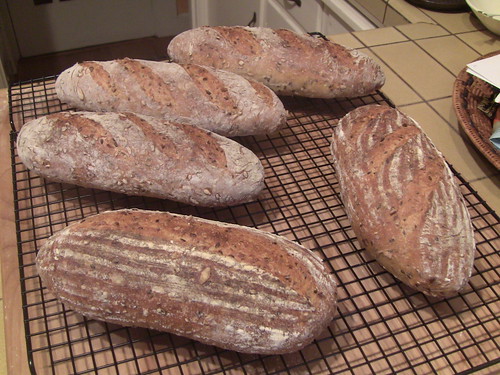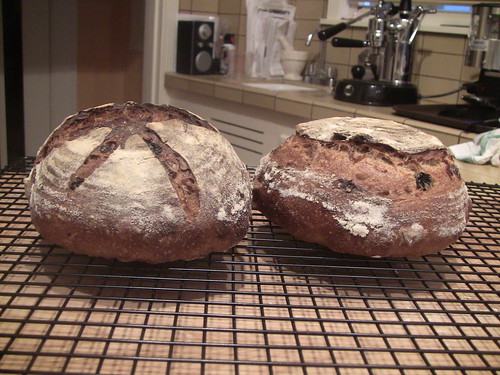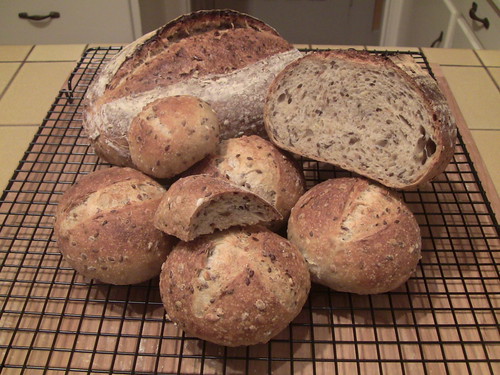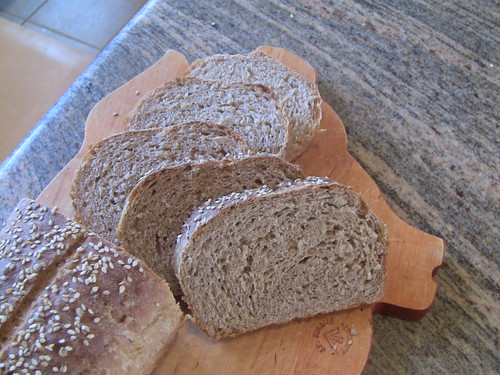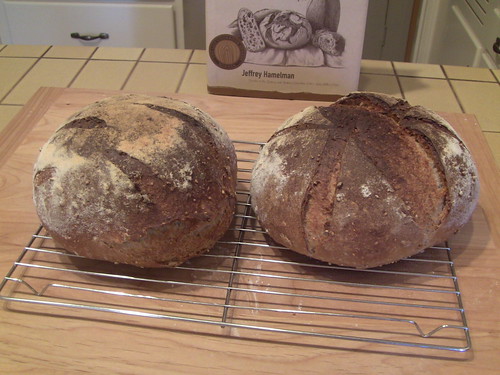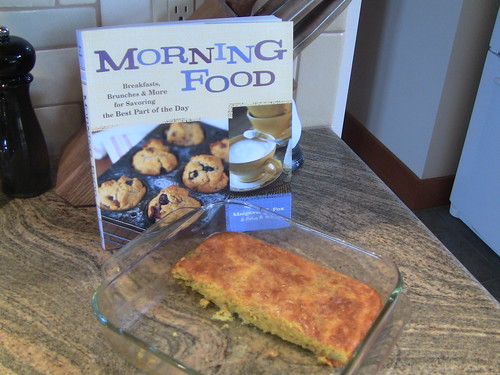GSnyde's blog
Hamelman's Five-Grain Levain in smaller Loaves
I baked five smallish loaves of the wonderful Five-Grain Levain. Not much to add to my forum post on the subject (http://www.thefreshloaf.com/node/31273/adjusting-bake-time-and-temp-smaller-loaves), except some pictures.
Hamelman's Whole Wheat with Mixed Grain Soaker and Seeds
Seeking a hardy healthy bread, I decided to try Hamelman's Whole Wheat with Mixed Grain Soaker. It's 50% whole wheat, made with a pate' fermente', and has a soaker of millet, cracked wheat, corn meal and oats. I also added toasted sesame, sunflower and pumpkin seeds. It has a nice crispy crust, tender crumb and a wonderful nutty flavor. This will not be the last time I make it.
Back in the Saddle with Vermont Sourdough with Whole Wheat
I've been absent from TFL for about a month. I had a rotator cuff injury that kept me out of the kitchen. Then a couple busy weekends. So I've only baked once or twice in the last 5 weeks, and didn't take any photos.
This weekend, we were home and I had time to bake. I decided to try Hamelman's Vermont Sourdough with Whole Wheat for the first time. A very nice bread. As you can see, I baked boldly. Thick crust and tender crumb. Very wheaty flavor. It would be a good base for a seed bread.
Sooful and Sourdough
A couple weeks ago I got a new cookbook, the recently updated version of Margaret Fox’s Morning Food. It is chock full of great recipes for muffins, scones, omelettes, fritattas and other a.m. goodies. It is also a great read, written with humor and charm.

